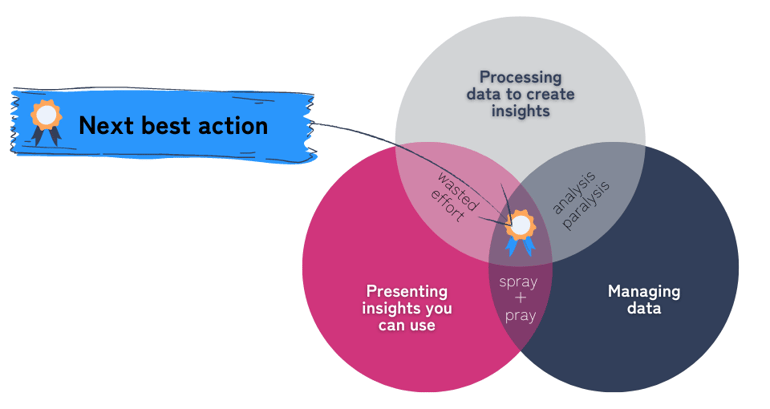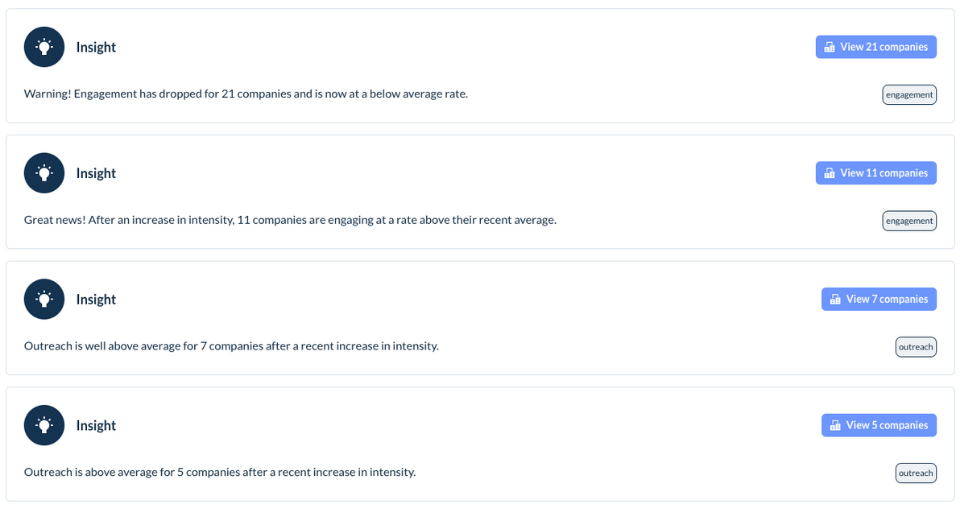Following our demand planning post, we wanted to expand on how it’s not just about what you do to generate demand, but how your team works together.
Yes, the questions to define – Who to target?, What to do?, and Why it matters? – are simple, but getting the answers isn’t easy.
Our vision is to make it easier for your team to work together toward a common goal by eliminating wasted effort and clarifying the next best action.
So, if the questions of Who, What, and Why are the core of creating a demand generation plan, the method to answering those questions is data, specifically managing it, processing it to create insights, and presenting recommendations you can use right away. Managing data
Managing data
Managing data requires connecting all data sources, collecting and preparing it for use, while keeping track of the changes over time. These steps help to create the foundation for making decisions. If you’re doubting your data is reflective of the business, you’re unlikely to feel confident about the decisions you need to make. You might even create an uncertain plan and find you need to continually adjust expectations because it’s not clear what to expect.
That’s why we make it easy to look at all your data sources across sales, marketing, and customer success. More data creates more context and additional meaning. We also transform the data so it works together and is enriched with additional information you may not be tracking such as engagement status and outreach intensity.
Processing data to create insights
As revenue leaders, we need to enable our teams to make data-informed decisions without pouring countless hours and energy into building and interpreting lots of dashboards or reports. The clearest way to get this is by having a shared view of what’s happening across your team.
Klearly does that by creating signals. Signals are the summary of events between your company and a prospect or customer, for example noting when an inbound prospect completes a form or marketing sends a message about an upcoming webinar. From the signals, you get messages to understand what’s working as an aggregate or with each individual account.
Once you know what’s currently happening, imagine being able to also know what could happen. Teams can use predictive outcomes to better prioritize the next best action to take and ultimately waste less effort.
Klearly uses the firmographic data as well as our internal monitoring system of signals from marketing, sales, and customer success events to create predictions and spot exceptions. This process allows you to prioritize work based on the likelihood of its success.
Presenting insights you can use
Insights for the sake of them is just more noise. Another data point can’t help if it’s not clear how to use it.
At the speed of our responsibilities, we can do better work with a clear analysis that points to what needs to be done to hit our goals. That’s why Klearly presents information that enables action. This starts with getting messages where your team is already working, from messages in your CRM or marketing automation platform.
Messages are focused on information you might not be regularly monitoring or opportunities you could otherwise miss. Also includes getting back to basics – getting better at targeting the right audience, whether they be a similar account or a particular buying role.

Want to learn more about how Klearly is helping revenue teams get to their next best action?






.png)
/Klearly%20Blog%20%7C%20Never%20Enough.png)